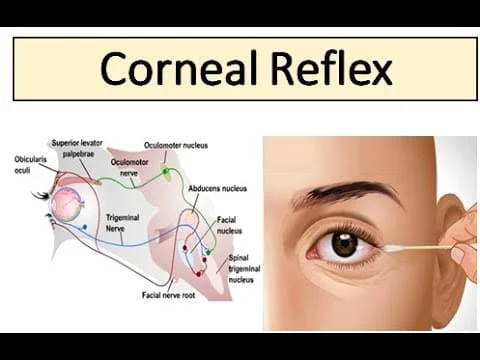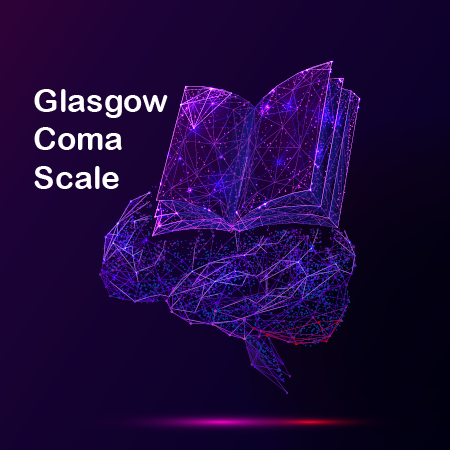Blink Reflex (Corneal Reflex)
The Corneal Reflex, also known as the Blink Reflex, is a protective and involuntary response of the eye that helps safeguard the cornea, the transparent front surface of the eye.
It assesses the facial nerve and trigeminal nerves’ structural integrity.
Table of Contents
Neuroanatomy
The afferent arm of this reflex is made up of the supraorbital branch of the trigeminal nerve’s ophthalmic division, and the efferent arm is made up of the motor fibers of the facial nerve. The blink reflex’s course is shown in the diagram below.
Technique of Blink Reflex
The patient is advised to maintain their relaxed state while keeping their eyes open or slightly closed. While the reference electrode (R) is positioned either over the bony prominence of the zygomatic arch or the nose, the active electrode (A) is put over the inferior portion of the orbicularis oculus.
Either the forehead or the chin may be the location for the ground electrode (G). Each supraorbital nerve is stimulated with a prong stimulator, and the orbicularis oculus’ response is recorded bilaterally. Allowing a little pause period in between successive stimuli helps avoid habituation.
Interpretation
The ipsilateral electrical stimulation of the trigeminal nerve will typically result in a bilateral eye blink, similar to the corneal reflex.
Indications of Blink Reflex
- Facial palsy (Mainly in Bell’s palsy)
- Acoustic neuromas
- Brain stem lesions such as stroke
- Multiple sclerosis
- Polyneuropathies like Guillain-Barre syndrome
Contraindications
The test technique can be affected by a patient who is uncooperative or by post-operative wounds or dressings, but there are no definite contraindications.
Advantages
The patient does not require any effort. This examination assesses the trigeminal and facial nerve’s intracranial and extracranial segments, unlike conventional exams like the nerve conduction study.
Disadvantages
The patient must feel totally comfortable and cooperate fully for higher accuracy. For some people, stimulation of the supraorbital nerve can be quite painful.





